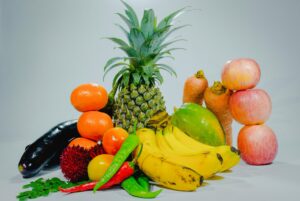The benefits of eating salad

Does your consumption of salad lower your risk of chronic diseases like heart disease and diabetes? A number of studies have linked the consumption of fresh, raw salads to a reduced risk of these conditions. In fact, one recent study showed that people who consumed the most salad had a 20 percent lower risk of developing type 2 diabetes than those who ate the least. Another study found that people who regularly ate at least 10 servings of cooked vegetables and leafy green-vegetable dishes per day had a 52 percent lower rate of developing type 2 diabetes than their counterparts who ate an average of 3 servings per day. In other words, eating at least 10 ounces (280 g) of raw salad per day can actually decrease your risk of developing type 2 diabetes by almost 20 percent.
How to enjoy a well-balanced salad.
If you’ve been on the lookout for ways to up your salad game, you may have noticed that there are a lot of rules when it comes to salad enjoyment. This article will help you understand the benefits of eating salad and explore how you can incorporate more fresh, raw vegetables into your diet. First, let’s get into what makes a well-balanced salad balanced. A well-balanced salad should contain a variety of vegetables, proteins and complex carbohydrates. A healthy amount of vegetables contain a balanced amount of vitamins, minerals, antioxidants and dietary fiber. Vegetables such as carrots, apples, avocados, sweet potatoes, tomatoes, broccoli and lettuce contain a lot of vitamins and minerals. Protein, such as chicken, fish, beef, turkey or pork, can be eaten alone or alongside vegetables. Some people also like to add seeds and nuts to their salads for a greater protein intake. Some complex carbs, such as beans and brown rice, also provide a great source of complex carbs.

Carrot and apple armored
Carrots are a good source of beta-carotene, vitamin C, vitamin E and potassium. They are also a good source of fiber and have been shown to protect the digestive system from cancer and improve insulin resistance. In fact, eating a bowl of carrots within a week of a meal can double the body’s ability to absorb minerals from your diet. A bowl of mixed veggies with a side of roasted carrots is a great meal to greet your body after a hard day’s work or study.
Dark leafy greens for high-omega-3 fats
Dark leafy greens are full of nutrients and have the highest concentration of omega-3 fatty acids among all the greens. They are also known for their anti-inflammatory properties that can help protect the liver and cardiovascular system, among other things. The reason greens like arugula, dandelion and spinach are full of omega-3 is because they contain unripe (green) vegetables. You’ll find them in very little amounts in many fresh vegetables like broccoli and lettuce. These greens are also rich in fiber, vitamins and minerals. They are excellent for digestive health and can prevent heart disease, cancer and insomnia.
Consistency is key
The best greens are the ones that you can consistently eat. That means they should taste good, be easy to find and can be prepared quickly. If you’re not a fan of greens, try to add some to your dinner routine. Add them to a salad or make a vinaigrette to drizzle over your lunch or dinner salads. If you regularly make a dinner salad, you can also add some greens to your weekly grocery shop.
A little lean meat goes a long way
You’re likely aware that eating a healthy diet is key to success. The latest statistics from the USDA show that people who consume the most meat have the highest rates of chronic diseases such as diabetes, heart disease and stroke. And that doesn’t even take into account the fact that meat has the second highest fat content of any food. A balanced diet should include lean protein, complex carbs and healthy fats. While red meat contains high levels of iron, it’s also thought to increase the risk of developing cancer. And because animal products contain saturated fat, you should aim for a healthier fat in your diet. You should also be careful when consuming nuts and seeds as they are high in fat and calories.
Add some spice with lemon and black pepper
You already know that lemon is a good source of vitamin C and can help prevent the common cold, but did you know that it can also treat or prevent diabetes? Well, a study published in the journal Nutrition and Diabetes explored the link between diabetes and the number of grains, legumes and nuts consumed. Researchers found that those who consumed the most nuts and seeds also tended to consume the most fruits and vegetables. In other words, eat your greens and don’t be afraid to mix it up. A balanced salad should contain a variety of vegetables, proteins and complex carbs. Try adding some hot peppers, cumin, turmeric, ginger or cayenne to your salads for added flavor and color.

The bottom line is that eating a well-balanced diet is essential to good health. The key is to make sure you’re including a variety of vegetables, protein, complex carbs and fat in your diet. Think about adding a few more greens to your meals, especially those that are fast-acting like lettuce, watercress and spinach. You can also try adding some seeds and nuts to make your salad even more balanced. If you’re trying to reduce your risk of developing chronic diseases like type 2 diabetes or heart disease, you may want to consider adding more greens to your diet. Most research shows that fresh, raw salads provide a lot of vitamin and mineral benefits. So, give them a try next time you’re at the market.





